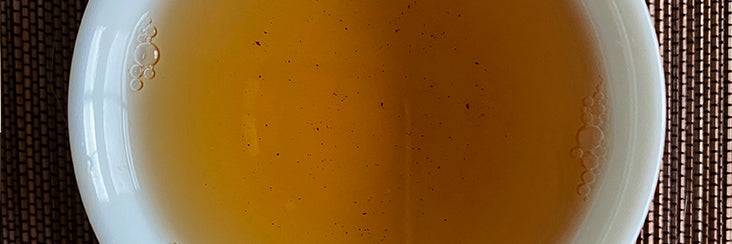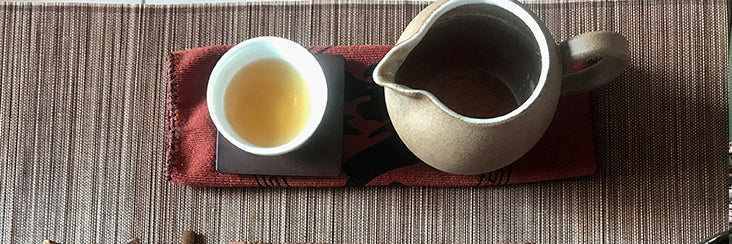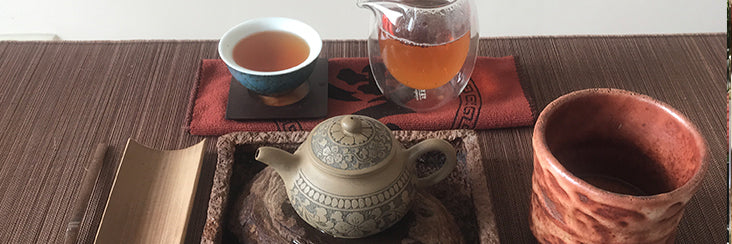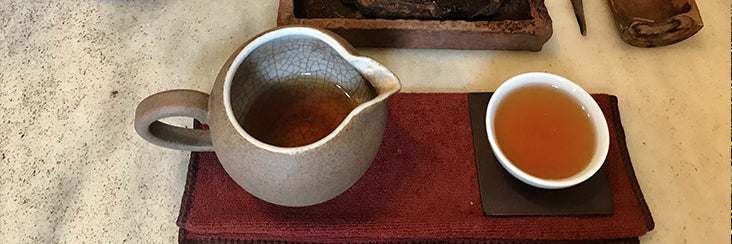Eco-Cha Tea Club

Hong Oolong Tea Tasting Notes | Eco-Cha Tea Club
We can see from the brewed leaves above that they resemble an Oolong Tea much more than a Black Tea. The bulk of the leaves still maintain their structural integrity, indicating that they have not been rigorously rolled, like a Black Tea would be. Only a portion of the leaf material was torn and squeezed to expose the sap, resulting in a more thorough oxidation. Most of the leaf material was treated with the skill and tact that an artisan Oolong Tea is made from. We feel that this is a more specialized batch of Hong Oolong in this respect.

Traditional Hong Shui Oolong Tea | Eco-Cha Tea Club
Batch 58 of the Eco-Cha Tea Club is a Hong Shui Oolong made in the traditional fashion by our friend in his home factory in Phoenix Village, Taiwan. He let his family plot of tea behind their traditional 3-sided farmhouse continue to grow after spring harvest in April until the last few days in July. This allows the tea trees to rejuvenate by growing naturally during the most vegetative phase of their annual cycle. He then harvested just the tops of the new growth before pruning his trees for fall harvest.

Honey Hong Shui Oolong Tasting Notes | Eco-Cha Tea Club
The Chinese "hong shui" means "red water", and the term has been adopted (or revived, depending on who you ask) as a name for heavily oxidized Oolong Tea. The name is used to designate a type of Oolong to stand on its own, and not be devalued by popular judging standards and marketing trends in Taiwan. The popular High Mountain Oolong Tea is a lightly oxidized tea with a bright golden, yellowish-green color. And even the competition standards set for Dong Ding Oolong Tea are a lighter golden-orange. But Hong Shui is, in fact, a proper tea on its own, and the level of oxidation is simply a variation in processing, not a fault or shortcoming in terms of its value. The processing methods to make this type of tea are actually how tea was made in Lugu (and many other places most likely), Taiwan, before tea became a commercial commodity.

Honey Hong Shui Oolong Tea | Eco-Cha Tea Club
This month's batch #54 of the Eco-Cha Tea Club is a Honey Hong Shui Oolong Tea sourced from our friends who have provided our Dong Ding Oolong Tea and our Small Leaf Black Tea in recent years. They also made Batch #33 of the Eco-Cha Tea Club which we shared in August 2018. Batch #33 was similar to this month's batch in that they were both made with the help of the Green Leafhopper.

Charcoal Roasted Honey Oolong Tea Tasting Notes | Eco-Cha Tea Club
This summer 2017 crop of naturally cultivated and well bug bitten and matured leaves were processed as a traditional Oolong, which mainly means that they were well oxidized. The work that went into oxidizing these leaves was considerable as well as skillful. The leaves needed to be worked, and they got worked well! The result is a full-bodied, substantial brew that offers a very satisfying balance that starts with a mild smokiness, leading into a fruity body with mineral notes, and finishing with something reminiscent of old school Charms lollipops. It really does have a distinct plum powder/confectioner's sugar finishing note that is cushioned by that smoky mineral base. It's a mouthful!

Tieguanyin Light Roast Oolong Tea Tasting Notes | Eco-Cha Tea Club
Batch #46 of the Eco-Cha Tea Club is a Tieguanyin Light Roast Oolong Tea from Yonglong Village in Lugu, Taiwan. The leaves were harvested in June from a plot of heirloom Tieguanyin tea plants. They were cured in the local traditional fashion of Oolong Tea making. The leaves are at least 40% oxidized, and were roasted for about 14 hours.

High Mountain Hong Shui Oolong Tea Tasting Notes | Eco-Cha Tea Club
This month's batch of tea being shared with the Eco-Cha Tea Club is a heavily oxidized, unroasted Oolong Tea harvested from the lower lying slopes of the Shanlinxi region. The character of this tea is an intriguing combination of Oolong and Black Tea. The aromatic qualities offer a rich sweet profile like fruit compote. On the palate, it has a broad range of flavor, with a base of deep musky notes into a complex fruity body with subtle hints of citrus in the finish. The aftertaste lingers with a dry headiness comprised of interesting sweet/tart and astringent tones.

